Many preparedness-minded people want to get into foraging wild plants but are worried that they’ll pick something that might kill them. An easy plant to start foraging is field garlic or wild garlic, which is plentiful, easy to identify, and versatile. You may even have some growing in your yard now.
HEY! It’s almost spring, and you know what that means?? Your backyard/neighborhood park is probably growing an invasive, delicious onion species, field garlic! This stuff is abundant, free, and easy to ID if you know what to look for. Forage responsibly but get u FREE ONIONS 🧅 pic.twitter.com/1CRInipOo3
— Melanie Gill Man (@melgillman) March 14, 2021
What is field garlic?
Field garlic (Allium vineale) is just what it sounds like: the wild version of domesticated garlic. However, while domesticated garlic is grown primarily for its large bulbs, wild garlic has tiny bulbs, and the tall, thin, chive-like leaves are the real prize.
(This only applies in North America. In the United Kingdom, the plant they call wild garlic is Allium ursinum and is quite different.)
Wild garlic is an invasive perennial. It emerges in late fall, but you probably won’t notice wild garlic shoots until springtime, when you can spot them as little tufts of weeds in your lawn. If the bulbs stay in the ground the leaves will come back year after year.
Many Americans can’t stand the sight or smell of them and spray them with herbicides. There’s absolutely no reason for most homeowners to do this. They’re free food! However, if you raise livestock, wild garlic can give meat and eggs a garlicky flavor you may not want. But herbicides don’t work particularly well against wild garlic, so you’re best off prying the bulbs out of the ground.
Where to find field garlic
Wild garlic can be found in the Eastern half of the continental United States and on the West Coast, as well as in much of Europe.
If you’re in one of those places, well, just look around you. Wild garlic likes to pop up in lawns and pastures. It seems to prefer shady spots.
How to identify field garlic
Wild garlic has more similarities to onions than domesticated garlic. Domesticated garlic has flat leaves while wild garlic has round leaves, like onions. Domesticated garlic has solid leaves while wild onion leaves are hollow, again, like onions.
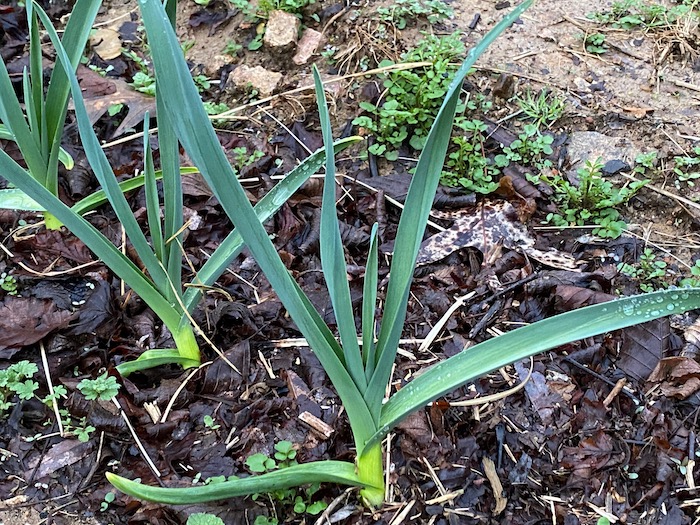
Look for the distinctive tufts of wild garlic leaves in shaded, grassy areas. They look like little patches of chives. You can also sometimes smell the distinctive oniony/garlicky scent from a distance.
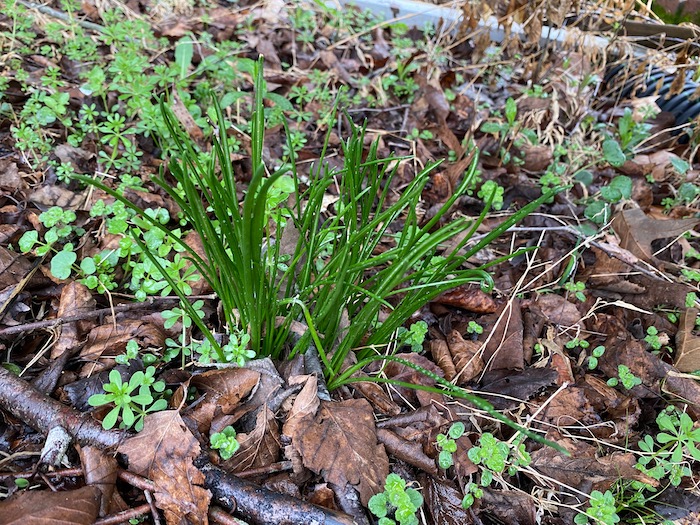
If you find what you think is wild garlic, pick a leaf and sniff it. If it smells like onions or garlic, that’s likely what it is. Take a small taste and it should pretty much taste like onion or garlic.
Wild onions have a couple of poisonous lookalikes: fly poison, which is found in many of the same places as field garlic, and the death camas, which is found along the Great Plains and the West coast. However, neither smells like an onion, so smell is your best indicator.
If left alone long enough, wild garlic may sprout flowers in the summer. By that point, it’s not fit to eat, but you may want to harvest it anyway to get it out of your yard or pasture.
How to harvest field garlic
If you want to keep the bulb in the ground so the garlic comes back, just snip off what you need with a pair of scissors.
If you want to remove the plant entirely so it doesn’t come back, you need to get at the bulb. Many experts recommend grabbing the entire bunch as close to the ground as you can and firmly but slowly pulling up. Unfortunately, I tried that and my heavy clay soil held on tight. I ended up ripping the leaves out of the ground.
So I grabbed a small digging fork and pried under the onions. I was then able to carefully pull the bulb out.
Once you have your wild garlic, pick out any brown leaves and rinse the rest well. Trim off any brown ends.
Field garlic recipes
Use wild garlic anywhere you would use chives: on potatoes, scrambled eggs, in soups, or anywhere where onions and garlic would be appropriate. The same goes for the bulbs, which you can treat like tiny onions.
There are a number of unique field garlic recipes that range from rustic to fancy. Georgia Pellegrini has a recipe for field garlic soup that includes sherry and cardamom. YouTuber Stdagger shows how to make a simple soup with field garlic.
How to preserve field garlic
Typically, I like to just harvest field garlic fresh from my yard whenever I need some. But if you get a big haul you can toss some in a dehydrator (an oven at low heat would probably work as well), dry the field garlic, and then grind it into powder in a food processor or with a mortar and pestle. Store the powder in a dry container in a cool, dark place.
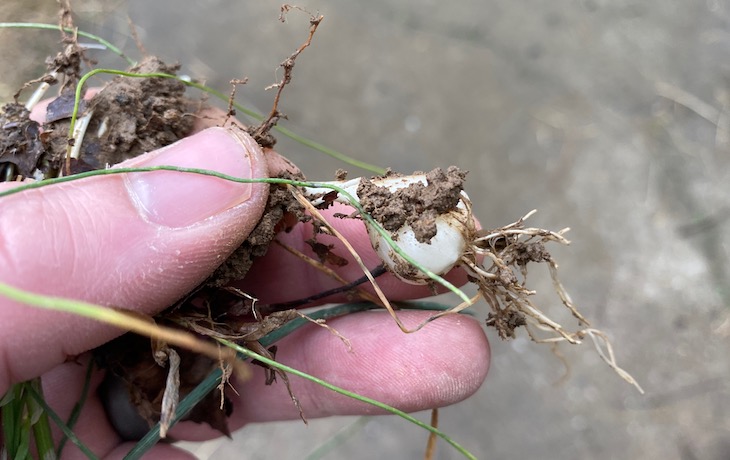
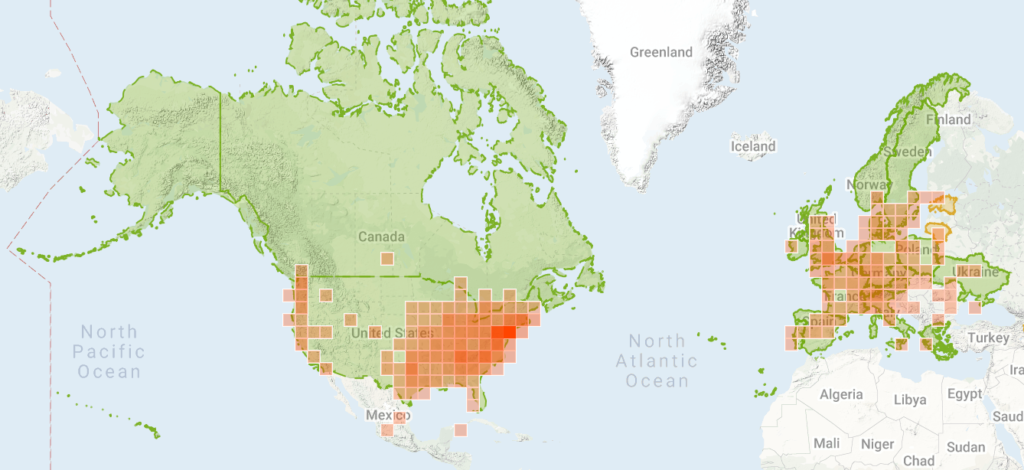
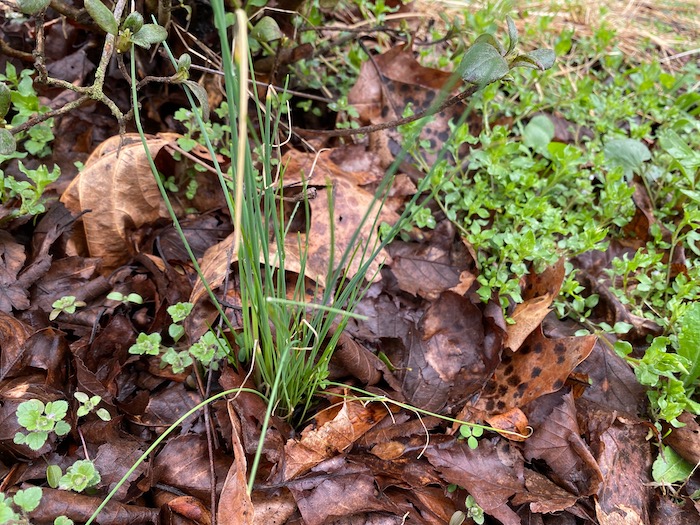
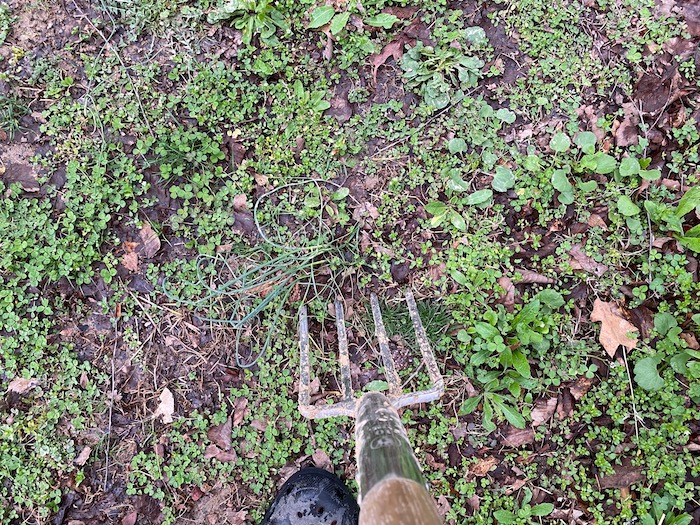
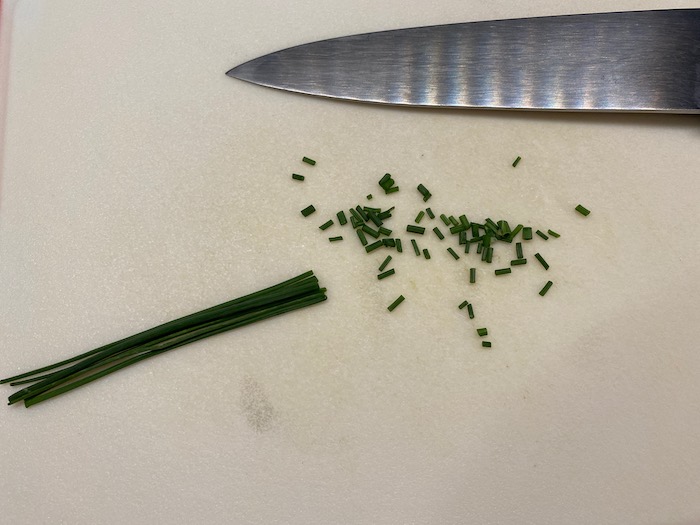
You are reporting the comment """ by on